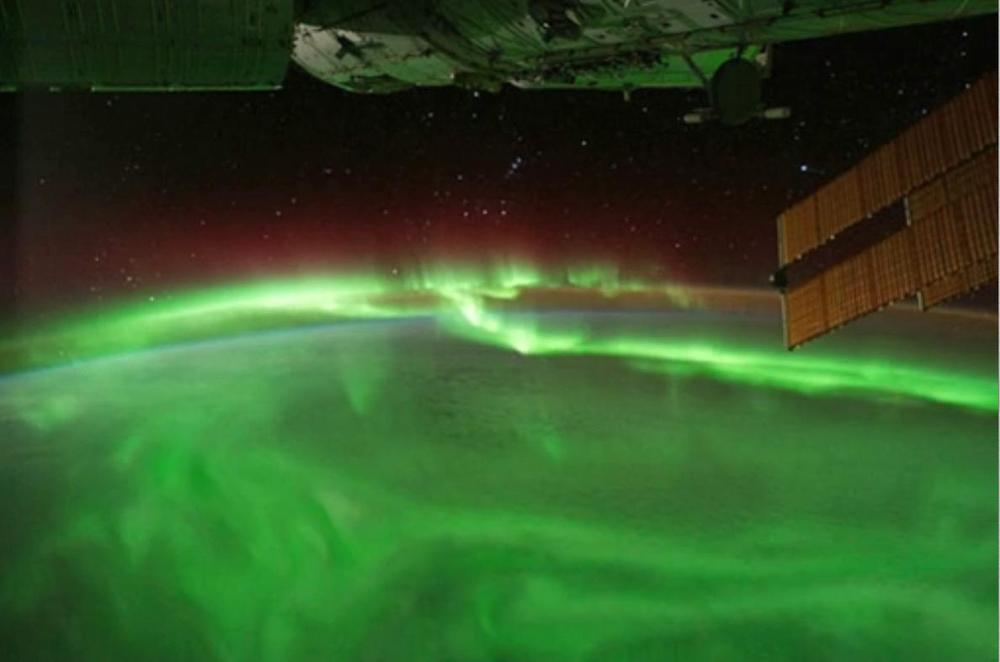Chapter 3. Space Radiation Environment
Picosatellites, like any Low Earth Orbit satellite (LEO), are going up to, well, LEO. Space weather—radiation and energetic particles emitted from an active Sun—can damage satellites. This region of space is partially protected from the worst effects of space weather by the Earth’s ionosphere, but it is an active and threatening place.
If space wasn’t active, there wouldn’t be any point in sending up my own Project Calliope to measure it. However, we’d prefer to keep the physical damage to the electronics to a minimum. The primary source of damage due to solar activity is due to highly energetic electrons, protons, and ions emitted by the Sun (see Figure 3-1).

Figure 3-1. Aurora caused by solar activity charging the Earth’s ionosphere, as viewed from space. Image courtesy of NASA.
The particle and radiation environment is not static. Besides time variation due to solar activity, the shape of the Earth’s magnetic field also can lead to dips in the field that cause a higher hazard in certain geographic areas. The most known dips are where the field lines converge at the Earth’s north and south poles. These are responsible for the aurora. There is also a dip near Brazil, called the South Atlantic Anomaly (SAA) (Figure 3-2) that LEO satellites can pass through during one or more orbits each day. Satellites with sensitive detectors often decide to either ...
Get Surviving Orbit the DIY Way now with the O’Reilly learning platform.
O’Reilly members experience books, live events, courses curated by job role, and more from O’Reilly and nearly 200 top publishers.

